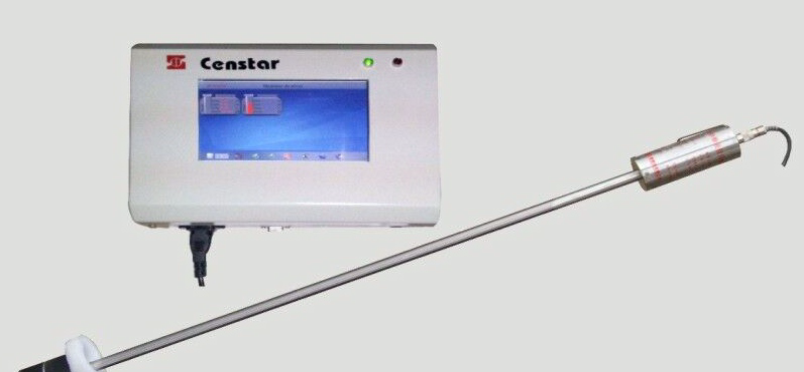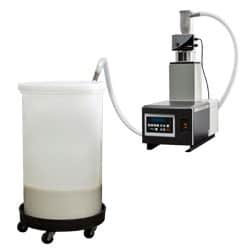

What happens when a thief hatch is opened? Exposure to hydrocarbon gases and vapors and/or oxygen-deficient atmospheres was believed to be either a primary or contributory factor in those deaths. NIOSH and OSHA identified nine worker deaths from 2010-2014 that occurred while workers manually gauged or extracted samples from production tanks. For workers performing this task, these exposures can have immediate damaging health effects and can even prove fatal. The alert states how opening tank hatches, often known as “thief hatches,” can cause high concentrations of hydrocarbon gases and vapors to be released. This alert identified the health and safety risks posed by exposure to concentrated hydrocarbon gases and vapors, and exposure oxygen-deficient atmospheres-and the potential for fires and explosions when hatches are opened on production and flowback tanks, or other tanks containing process fluids.
OTOMATIC TANL MANUAL
Occupational Safety and Health Administration (OSHA) jointly issued a hazard alert 1 for workers involved in manual tank gauging and fluid sampling at oil and gas extraction sites. National Institute for Occupational Safety and Health (NIOSH) and U.S. The use of manual tank gauging is still common in the oil and gas industry, but it is a method which can compromise the safety of the workers making the measurements. Improving Worker Safety with Automatic Tank Gaugingīy Christoffer Widahl, Senior Strategic Product Manager, Emerson Automation Solutions The new API MPMS 18.2 standard, which allows automatic tank gauging to be used for custody transfer on production tanks, will help to prevent injuries. Manual tank gauging at oil and gas extraction sites is a dangerous and potentially fatal operation.

Despite these changes, the AMRAD failed to sell.By Christoffer Widahl, Emerson Automation Solutions In order to lower the weight of the system, the turret's armor was reduced and the radars were removed and replaced with an optical-only aiming system cued by a remote radar. OTO-Melara attempted to revive the concept with the AMRAD ("Artillery Multi-Role Area Defense"), which had a much lighter mounting, and which was intended for use on a variety of wheeled vehicles. Therefore, the costly (over 6 mld of lires, excluding the new logistic) 76 mm SPAG was never ordered, and received no order even from foreign costumers, despite the 76 mm gun was already well known and widespread in many navies around the world. OTOMATIC therefore had no orders by the Italian army, as both SIDAM and Skyguard Aspide were already in order with very high costs, coupled with the Stinger missiles, the upgraded HAWK and the coming MEADS missiles.

But this was not adopted as well, as it was too limited for a 1990s anti-aircraft self-propelled gun. The needing for 60-80 OTOMATIC was never satisfied, and the Italian army was even evaluating using a L70 Bofors with a Leopard 1 as 'gap filler'. Italian army had to have another turret used with a Leopard 1 chassis (the turret was adaptable to many 40 ton vehicles, like the Leopard or the OF-40), but the amalgamation never happened, as the SIDAM quad 25 mm gun was already in production and, despite being inferior and not all-weather, it was held in production and almost 300 examples were bought.

However, the Otomatic was never put into production because the widespread presence of anti-aircraft missiles reduced the need for a long-range AA gun on the modern battlefield. There was also a 7.62 mm turret mount for close defence. The barrel was strengthened in order to hold greater pressures, so it can fire not only HE, but also APFSDS ammunition. The gun could also be useful against lighter armored vehicles or older generation tanks. OTO Melara offered it as a long-range SPAAG that could outperform systems like the Gepard and similar versions with the British Marksman turret that mounted much smaller 35 mm guns. The whole turret was built of steel (roughly with the same thickness of the one used in early Leopard 1s) and weighed 15 tonnes. It also included an optical fire-control system with periscopes for search and aiming, with a laser range-finder. The design combined the chassis of a Palmaria Self-propelled gun (SPG), with a new turret mounting the Otobreda 76 mm gun along with associated search and targeting radars and their fire control systems: an S search radar SMA VPS-A05, with around 15 km range against aircraft and 8 km against helicopters in hovering and a fire control unit SMA VPG-A06 (Ka band). The Otomatic was an Italian prototype self-propelled anti-aircraft gun (SPAAG) designed and built by OTO-Melara. 1× Otobreda 76 mm derived autocannon with 70 rounds


 0 kommentar(er)
0 kommentar(er)
